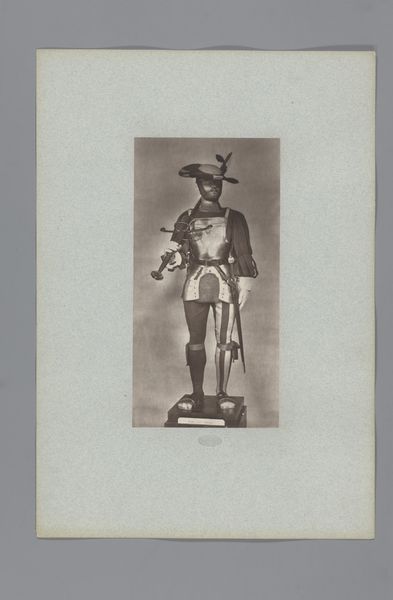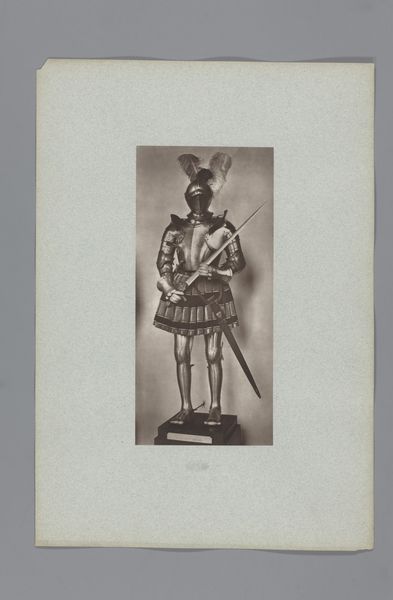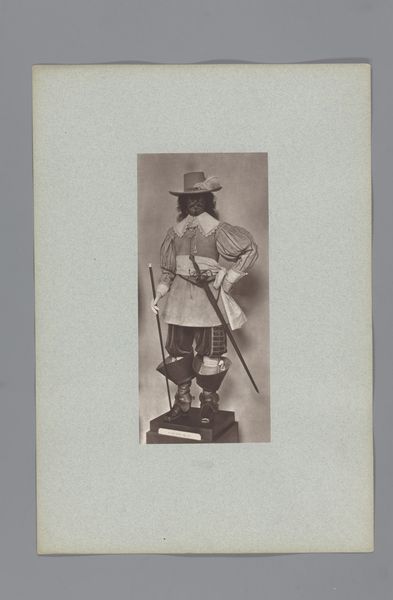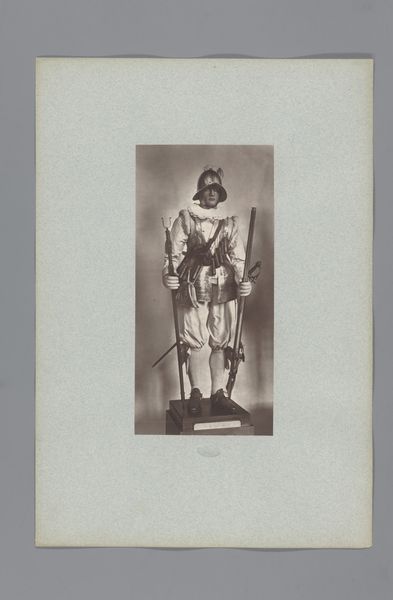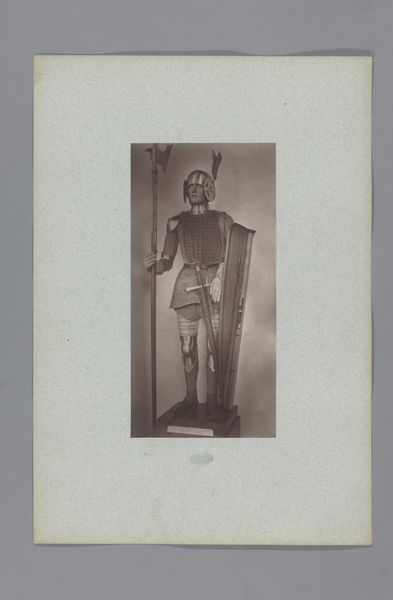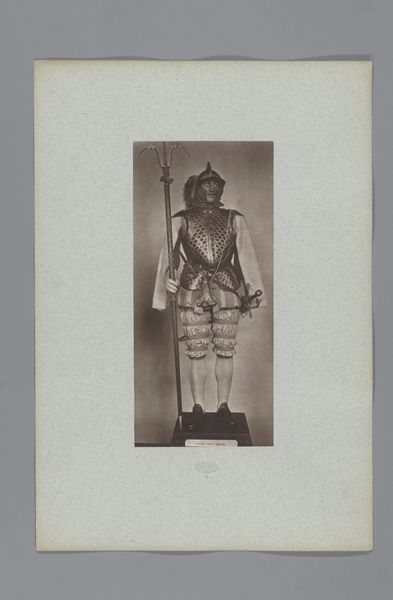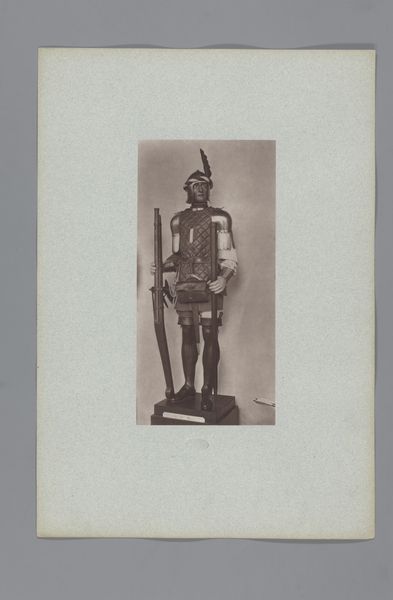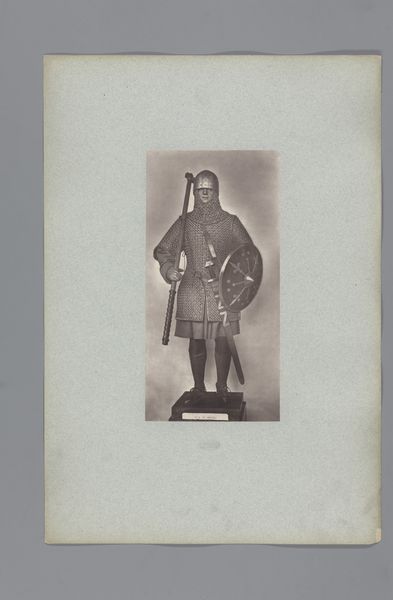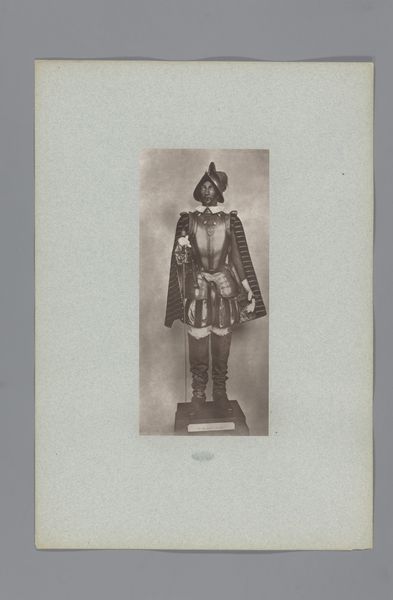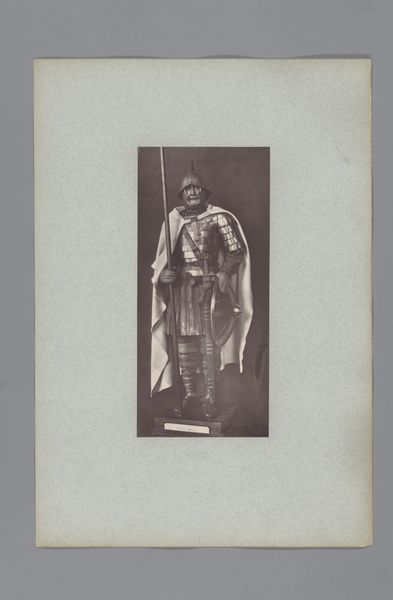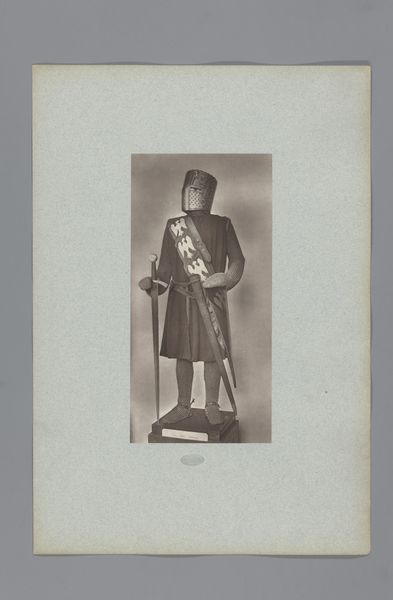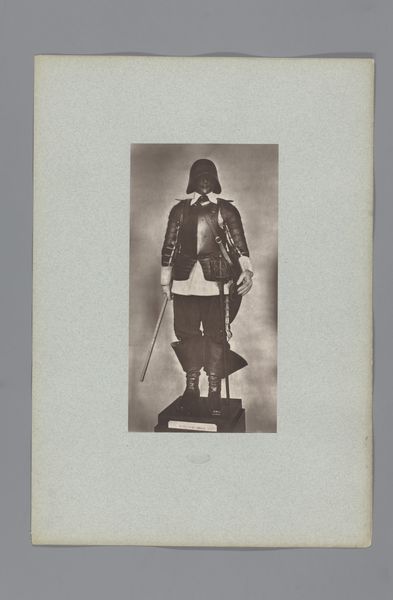
Laat-16de-eeuws harnas uit het leger van Hendrik IV van Frankrijk, uit de collectie van het Musée d'Artillerie in Parijs before 1882
0:00
0:00
anonymous
Rijksmuseum
photography
#
portrait
#
medieval
#
photography
#
history-painting
#
armor
#
italian-renaissance
Dimensions: height 265 mm, width 127 mm
Copyright: Rijks Museum: Open Domain
Editor: Here we have a photograph taken before 1882, showcasing a late 16th-century suit of armor once belonging to the army of Henry IV of France, now held at the Musée d'Artillerie in Paris. The photograph itself gives the armor a stark, almost ghostly presence. What draws your attention to this piece? Curator: What I find compelling is to consider the labor involved, not just in forging this armor, but in its purpose. The industrial means of extracting ore, the specialized craft of the armorer—these speak volumes about the society that commissioned and used such an object. Think about the social and economic systems that made this possible. Editor: That's fascinating. It shifts my perspective from seeing it just as a display of wealth or power to understanding it as a product of a complex network of resources and labor. Do the materials used, the specific metals, tell us anything about this period? Curator: Absolutely. The quality of the steel, for example, reflects the technological capabilities of the time. Was it locally sourced? Imported? Consider the trade routes, the geopolitical implications of access to certain materials. And, of course, what was the cost for such materials? Editor: So, even something seemingly straightforward like armor can reveal intricate details about a society's economic and technological capabilities. I hadn’t thought of it in such detail before. Curator: Exactly. By examining the materiality and production, we unearth hidden histories of labor and consumption, disrupting conventional notions of art historical significance. It’s a constant interplay between object, maker, and society.
Comments
No comments
Be the first to comment and join the conversation on the ultimate creative platform.
